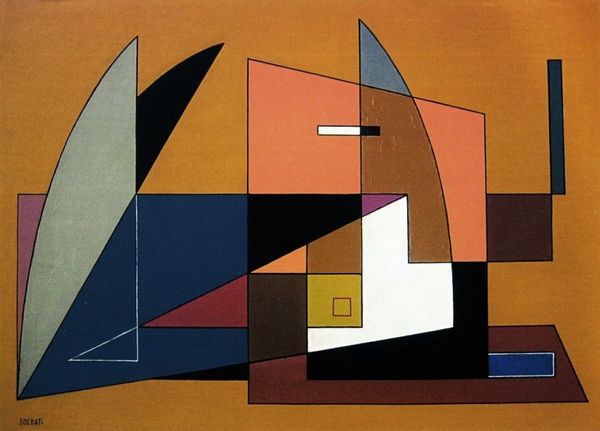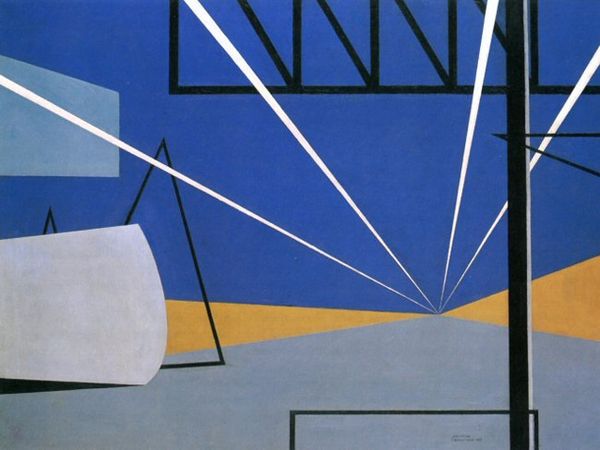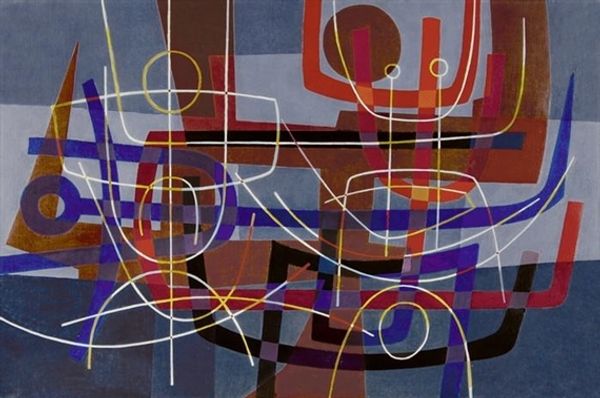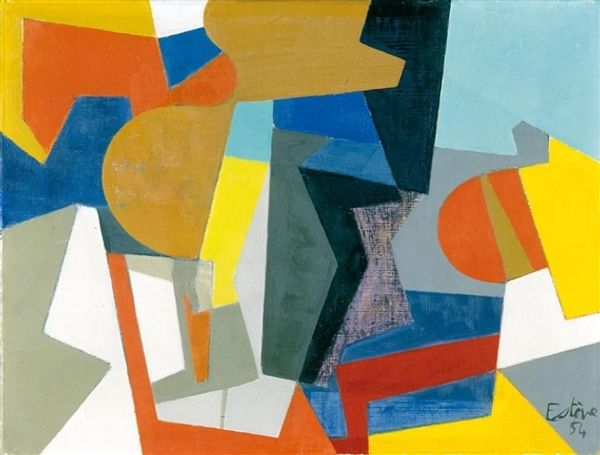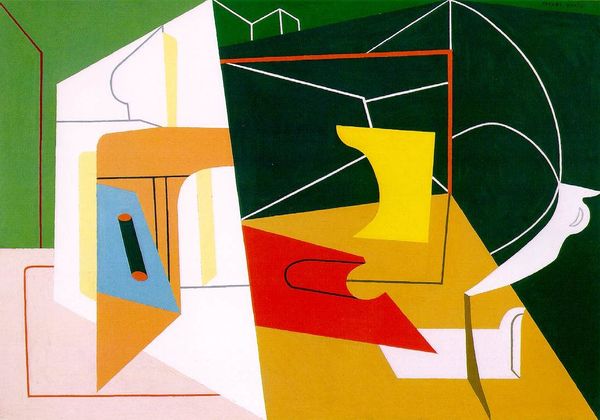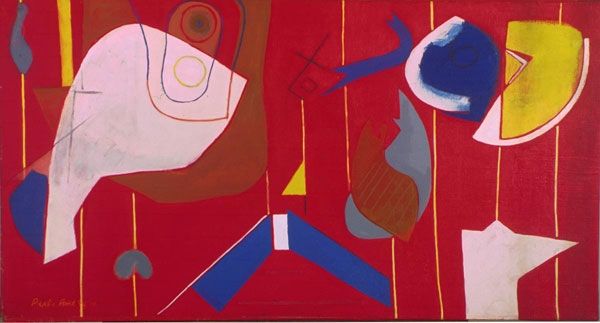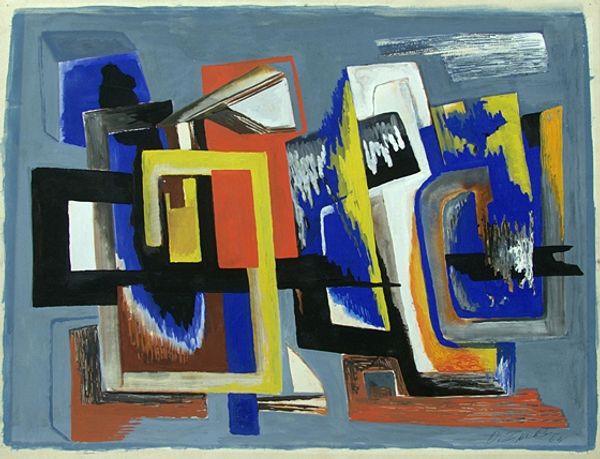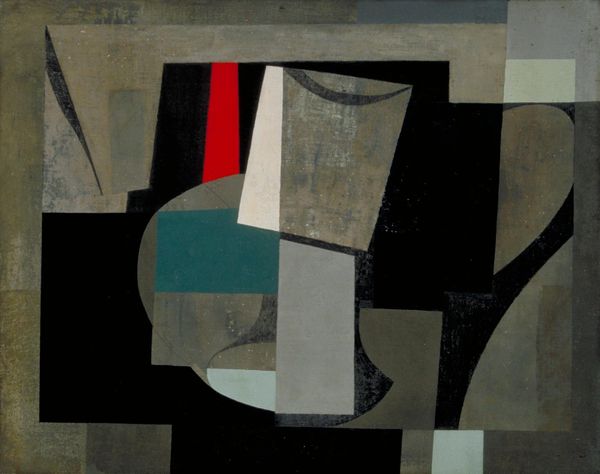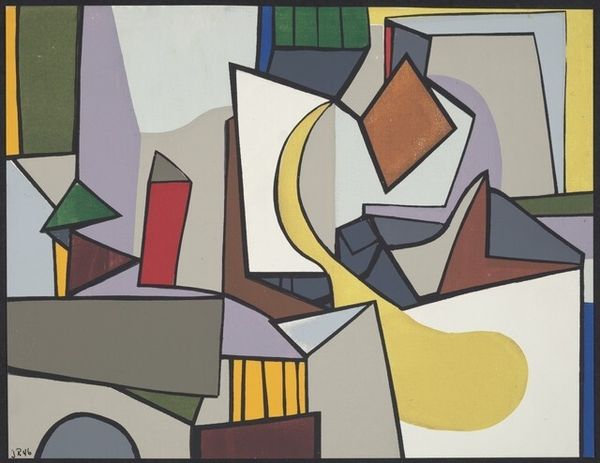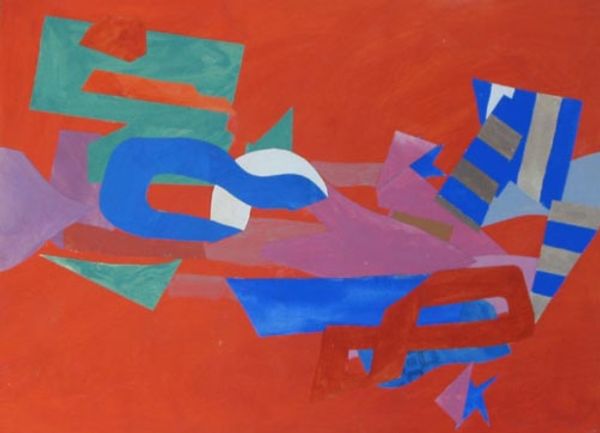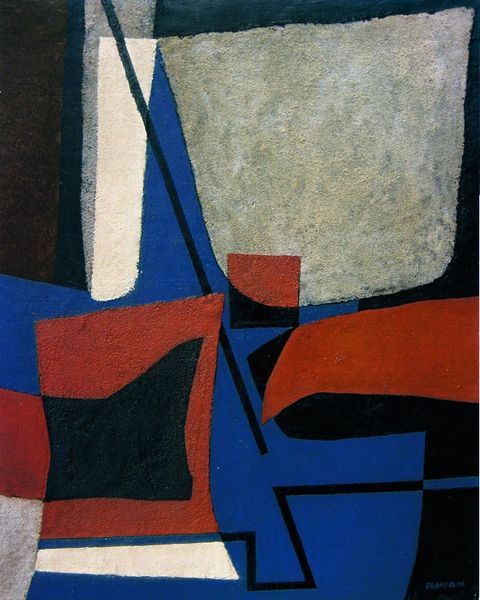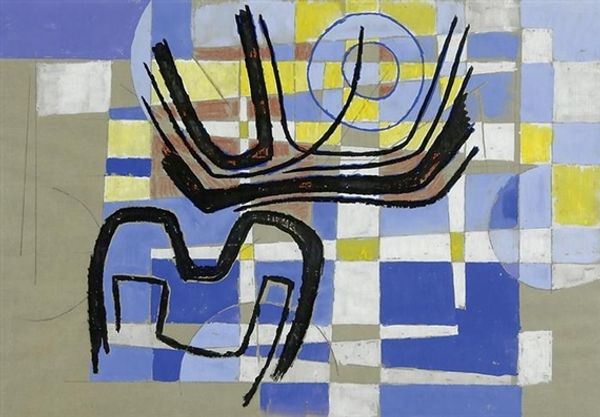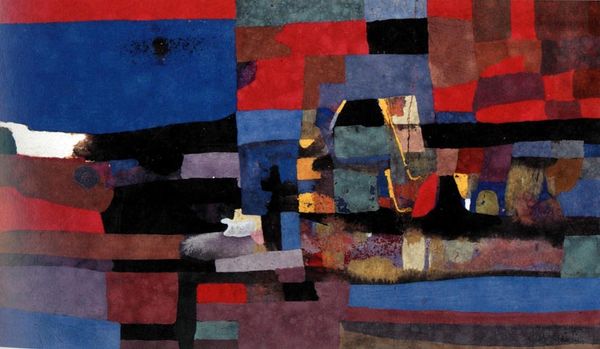
painting
#
precisionism
#
abstract painting
#
painting
#
pop art
#
geometric
#
abstraction
#
line
#
hard-edge-painting
Copyright: Ralston Crawford,Fair Use
Curator: Looking at this painting by Ralston Crawford, created in 1946, entitled "Nacelles Under Construction," one is immediately struck by its sharp, geometric forms. What are your first thoughts? Editor: Clean. Strikingly clean, actually. It's the geometry, as you said, but it’s also the carefully controlled palette. I feel a certain coolness emanating from it, like I'm peering into a rigorously ordered machine. Curator: Interesting. Crawford's Precisionist style often focused on industrial landscapes and architectural subjects. Considering the title, we can speculate that the depicted shapes might represent airplane engine housings, or “nacelles," in the process of being assembled. We see geometry applied to the war industry. Editor: So the "nacelles" signify progress, or maybe the mechanical spirit of the age. The careful organization then could be the artist imbuing logic and rationale into something made through intense labour. What can you tell me about his working style and the labor that went into it? Curator: Crawford employed a very precise painting technique, almost as if he was creating blueprints rather than painterly compositions. We see minimal brushstrokes. He valued flatness of color, too. It reflects an industrialized aesthetic. I also think we have to consider the rise of pop art. It would soon start to incorporate aspects of consumer society into its imagery. Editor: Precisely! I find it fascinating how the composition invites the eye to travel around. See the interlock of shapes and lines! Do you think he achieves this through his use of colour? The way those blocks relate creates an illusion of depth within its defined space? Curator: Undoubtedly. The planes of color contribute to a dynamic yet controlled movement. What strikes me is Crawford’s commitment to simplifying form. His abstraction conveys a sense of the essential geometry underlying industrial production and architecture. Editor: For me, this piece embodies how line, color, and structure could coalesce into a single harmonious aesthetic statement, reflective of its specific cultural moment. I can appreciate the image not just as it’s representing construction but what its own making represents in history. Curator: Yes. I am drawn back to the piece as a study of that same making – to the relationship between man and the world that he is fabricating in the period.
Comments
No comments
Be the first to comment and join the conversation on the ultimate creative platform.
